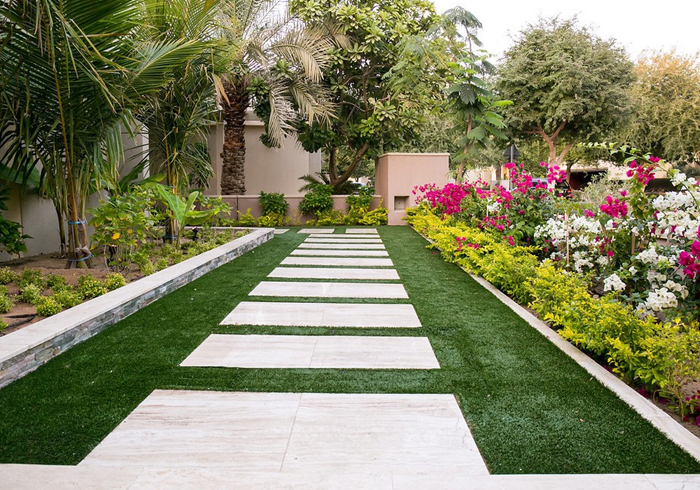Unknown Facts About Landscape Design
Unknown Facts About Landscape Design
Blog Article
Unknown Facts About Landscape Design
Table of ContentsSome Ideas on Landscape Design You Should KnowFacts About Landscape Design RevealedThe Best Guide To Landscape DesignLandscape Design Things To Know Before You Buy
A yard can normally be separated right into three areas: public (the front backyard), personal (the back backyard), and solution (generally the side backyard). The location of activity locations depends mainly on the type of area, the size of space needed, the kind of activity, and the preferred distance to other tasks and frameworks.
The outside wall of the home usually acts as the initial wall or beginning factor of an outdoor room. Incompatible usages should be divided, and associated activities, such as food preparation and eating, ought to be assembled to make the lawn more effective and delightful. When making use of hardscape to produce rooms, use construction material comparable to that utilized in your house for continuity from your home right into the yard.
Linked spaces. Credit Report: Gail Hansen, UF/IFAS Utilizing similar hardscape attributes and repeating plants draws the eye around the garden.
This provides a feeling of secret that advertises expedition and exploration of the landscape. From a layout viewpoint, plant products have 3 major features in the landscape: aesthetic, architectural and utilitarian. Visually, plants develop a visually positive setting and structurally plants arrange and define rooms. Plants are practical since they can change the atmosphere for the convenience of the user by changing light, temperature and moisture.
Landscape Design Can Be Fun For Everyone
For psychological convenience plants are made use of as physical or implied barriers for personal privacy and safety. Physical obstacles block both the view and accessibility to a room and include fencings, walls and plant hedges. Landscape Design. Implied obstacles, usually reduced growing plants, obstruct accessibility yet not the sight (Number 9). Various other functions of plants include cleaning up the air, avoiding erosion and soil loss, keeping moisture in the dirt, and returning natural matter to the dirt.
Physical and implied barriers. Credit History: Gail Hansen, UF/IFAS For these reasons, the kinds of plants to be made use of (such as trees, shrubs, or groundcovers) must be picked in the very early phases of planning. Plant kinds are picked for their functional capacities to ensure that their future purpose and needed room can be considered at the same time.
The overhead airplane, the vertical aircraft and the ground plane must all be considered to create enclosure. As soon as the form of a plant bed has been developed, the plants should be massed (grouped) and layered to attain aesthetic unity and the wanted quantity of enclosure. The size of a plant mass will depend on the complete dimension of the lawn, the dimension of the private plants in the mass, and the focus or impact wanted from the plant product.
Each plant mass is in front of, behind, or following to, an Visit Your URL additional mass. Credit Score: Gail Hansen, UF/IFAS Repeating plants within a mass and repeating masses with comparable plants connects the garden together. The individual plant qualities have to be considered to successfully layer and mass plants.
The 30-Second Trick For Landscape Design
All plant structures start with the major structure plants, the big, primarily evergreen history plants-such as the trees and big shrubs. These plants separate or enframe spaces, manage the dimension of the room, and supply the starting point for choosing the ideal features of the second layer, midground plants, for massing and infill.
Crucial points in the garden need to be highlighted by the use unique plants, distinct structures, or yard accessories. Noting thresholds or entryways to spaces can be made with gateways, arbors, and actions, or via using one-of-a-kind and vibrant plants. The type and/or style theme of the garden will certainly often help establish the crucial factors and how they must be highlighted.
Other vital places in the yard are focal factors, which is utilized to visually organize a designed location. Different perspectives or point of views can expose different make-ups in the landscape that might call for a variety of focal points.
A Biased View of Landscape Design
Number 13. Plant types. Credit Report: Gail Hansen, UF/IFAS After type, texture is the following dominant attribute of a plant; over here rugged, medium and great appearances can be made use of for contrast and emphasis in the landscape. Form and appearance both trump color in the yard for most of the year. During specific periods, shade will certainly be the most visible quality of the yard.

The pleasant aroma of plants, the sound of wind in the trees, the sound and structure of water, and the colors and textures of sculptures, pots and garden furnishings all include in the experience of the garden. One detail that is commonly neglected is the effect of light on the visual appeals of the plants.
The whole garden changes check my blog in function and look throughout the day, and the training course of a year, as the light and temperature level adjustment from early morning to evening and period to season. Plant selection must think about a plant's growth rate, its fully grown dimension and type, and the maintenance it will certainly need.
It is very important to understand the ultimate mature size of plants so they can be placed in the right place and spaced correctly when they are set up. Giving plants area to grow is a challenge because the common mature dimension is usually based on ideal expanding problems and the ecological problems of a site might create a plant to enlarge or stay smaller.
Report this page